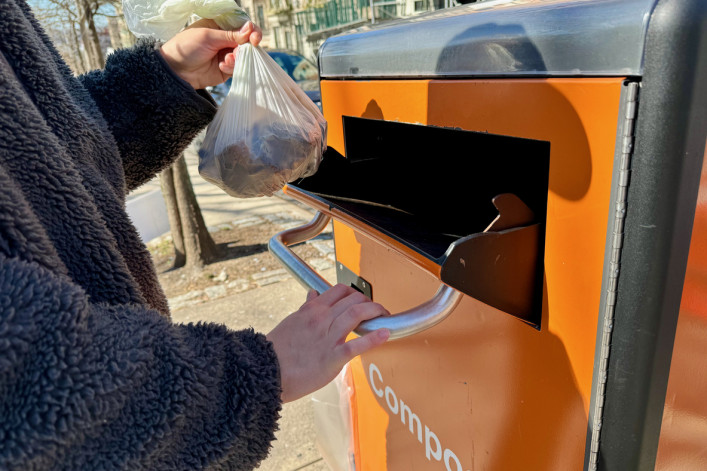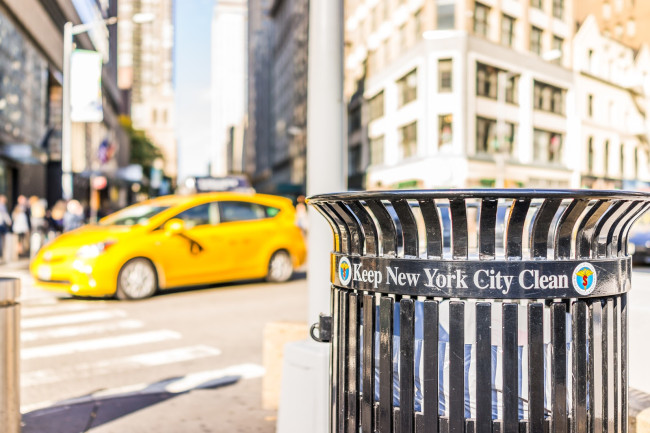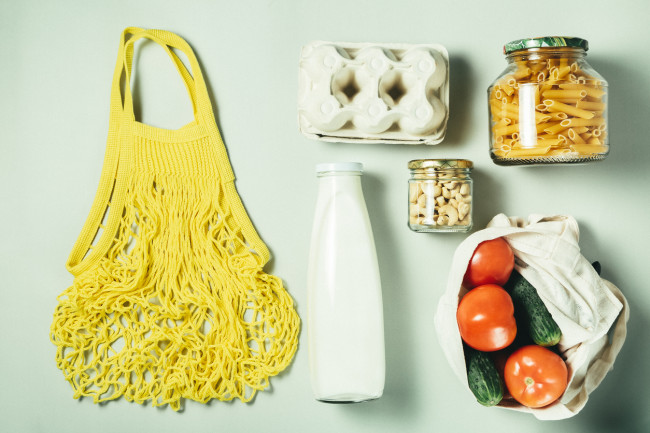10 easy ways to honor Earth Day in NYC that you can do every day
- By taking action with thousands of NYers, it’s hard to argue that nothing can be done about climate change

In honor of Earth Day 2024, why not pledge to do a better job collecting organic waste for composting?
iStock
A neighbor recently remarked that “climate change is awful but there is nothing I can do about it, so I’m just going to live my life.”
As maddening as that stance may be, I understand her point: The problems facing the environment are massive and need to be addressed by the large entities that cause them—corporations and governments. Putting the burden of fixing the environment on the individual, for instance, telling people to bring their own bags to the grocery store, seems futile to her.
But while I understand what's she's saying, the third way—to work collectively to enact change, seems to be the only real option. By organizing to change our daily habits, and encouraging our friends and neighbors to do the same, we can do better when it comes to taking care of the planet.
So on this Earth Day, instead of sharing a list of one-time events, Brick offers this list of goals to incorporate into your daily life to reduce your footprint and tread more lightly on the earth. By taking action along with thousands of fellow New Yorkers, it’s hard to argue that nothing can be done about climate change.
Below is a list of 10 low-key ways you can join forces with people who are working to protect the planet.
1) Reduce your use of plastics
The theme of Earth Day 2024 is reducing plastics, and organizers are demanding a 60 percent reduction in the production of all plastics by 2040. You can sign the global plastics treaty petition here.
Advocates of plastic-free living say it’s especially important to reduce your use of plastic in the kitchen. Consider swapping out plastic storage containers for glass or stainless steel. Bring reusable mesh bags along with your tote bags when shopping for produce.
Another way to cut down on plastic use is to buy cleaning products with little or no plastic packaging. With subscription services from cleaning companies like Grove, BlueLand, and CleanCult, you get a reusable glass spray bottle and tablets that you can mix with water to create cleaning solutions.
2) Plant a street tree in NYC
Street trees play a critical role by keeping city streets cooler, removing air pollutants, and reducing stormwater. If you have an empty tree bed in front of your building, you can put in a request to have a tree planted by the city for free (be patient; it may take some time for your request to be filled). Once your tree is planted, be sure to care for your young tree to help it survive.
3) Adopt an existing street tree
You can also “adopt” a street tree in your neighborhood and help your tree thrive: Keep the tree bed free of debris, water it in hot weather, remove paving stones or bricks from the tree roots, and gently loosen compacted soil.
4) Plant a tree in your yard
Have space in back or front yard to plant a tree yourself? Sign up is underway for New York Restoration Project’s free tree giveaway. Held throughout the city in April and May, young trees are available, including like Eastern Redbud, Elderberry, Flowering Dogwood, Northern Red Oak, American Persimmon, and Sweetbay Magnolia.
5) Volunteer at a community garden
Community gardens help green the city and are an entirely volunteer-let effort. You don’t necessarily need to have any gardening experience to get involved. If you have one in your neighborhood, it is likely to have its hours and schedule posted near the entrance. You can also search NYC Park Green Thumb’s community garden map for a location near you. GrowNYC, one of the largest volunteering organizations in NYC, has gardening, recycling, and Greenmarket volunteer opportunities.
6) Volunteer at a NYC park
Frederick Law Olmsted conceived Central Park as “the lungs of the city”—a place to breathe fresh air. Little did he likely realize that a park does important respiratory functions, for example, a mature tree can absorb more than 48 pounds of carbon dioxide and convert it to oxygen. To support NYC parks, there are a range of volunteer opportunities, including weeding invasive species, restoring paths, and picking up trash. Don’t have time to schedule your volunteer effort? No problem. You can work solo and even track your efforts. (Enjoy the park on a regular basis? Pick up one piece of trash each time. Boom.)
7) Do a better job sorting trash and recycling
If your building isn’t doing a good job sorting trash, recyclables, and organic waste, this can be a good project to champion. There are lots of benefits—including avoiding fines and reducing the amount of garbage being sent to landfills. Last year NYC enacted sweeping changes for garbage collection, including later pick up times and switching from bags to bins. Brick has a breakdown of the new rules here. Making it easier for your neighbors to follow the rules, with clear signage and labeled bins, can help improve participation.
8) Collect your compost
The city expanded its compost collection program to all of Queens and Brooklyn (while eliminating organics collection at Greenmarkets). Here is Brick’s advice on the best ways to sort organic waste. And if you have small space outdoors, you can set up your own compost bin to reap the benefits yourself (it’s a lot easier than you think and your plants will thank you).
9) Recycle your e-waste responsibly
It is illegal to throw out electronic waste with trash or recycling because many components can be toxic to the environment. You need to find a retail location that accepts e-waste or find a SAFE disposal event. Apartment buildings with 10 or more units can enroll in a program for free electronic waste collection. In addition, the Lower East Side Ecology Center holds e-waste recycling events.
10) Donate your stuff
If you’re decluttering or moving, it can take some effort to get larger items like furniture into a new home (instead of a landfill), but the end result is highly appreciated by fellow New Yorkers in need. You have two options: you can donate person-to-person via sites like Craigslist, Nextdoor, and neighborhood listservs. Or you can donate to places like Goodwill Industries, Habitat for Humanity ReStore, The Salvation Army, Big Reuse, and Housing Works.
You Might Also Like



























